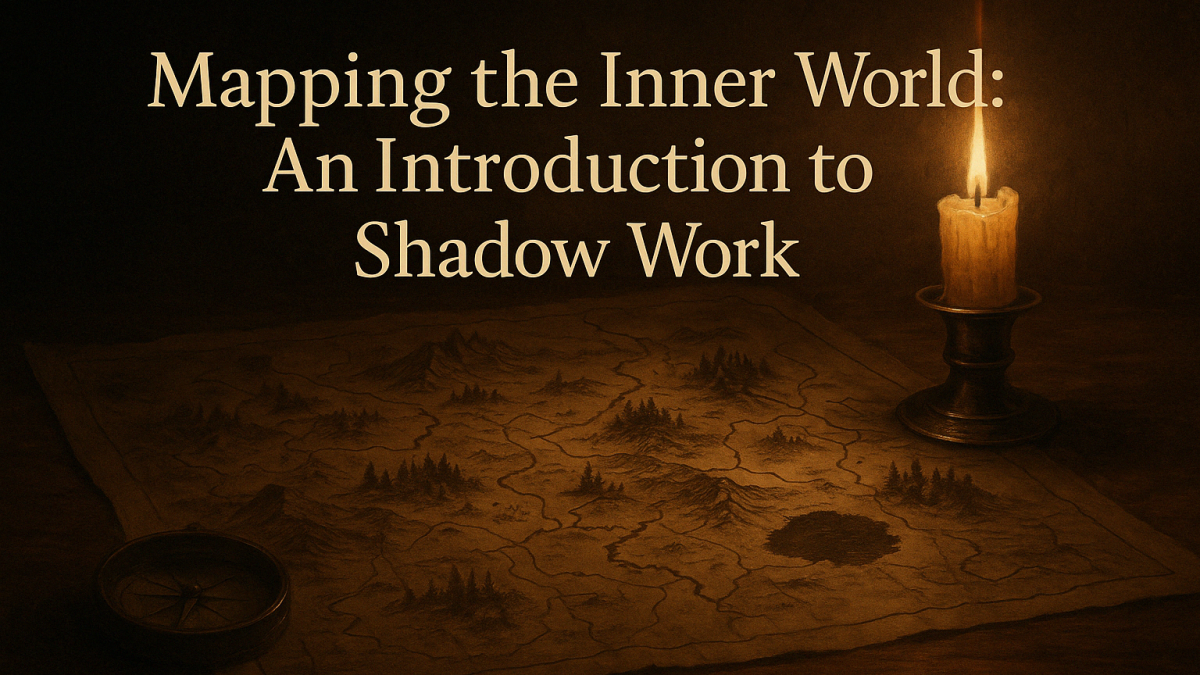Mapping the Inner World: An Introduction to Shadow Work

A personal introduction to Shadow Work through metaphor, memory, and mapping the inner world. Updated with new reflections from a 2019 post
Mapping the Inner World: An Introduction to Shadow Work
“Updated April 2025. This post now includes excerpts and metaphors from a 2019 blog that marked my first steps into Shadow Work—even before I had the language for it. If you’ve ever found old writing and seen how far you’ve come, this one’s for you.”
“Who looks outside, dreams; who looks inside, awakens.” - attributed to Carl Jung
I didn’t realize it at the time, but five years ago I wrote a love letter to my future self. I was writing about trauma, metaphors, and mental monsters—but I hadn’t yet named what I was doing as Shadow Work.
Today, I recognize that old post for what it was: the first cautious step into the forest of my unconscious.
What Is Shadow Work—And Why Start Here?
"Shadow Work" may have emerged from Carl Jung’s work in the 1950s, but it has evolved far beyond its roots in analytical psychology. At its core, Shadow Work is the conscious exploration of the parts of ourselves we’ve exiled—often for good reason. These are our hidden fears, reactions, identities, longings, and wounds. The parts that once protected us… but now keep us stuck.
“Until you make the unconscious conscious, it will direct your life and you will call it fate.” – Carl Jung
This isn’t about fixing ourselves. It’s about discovering what’s been hiding beneath the surface—and reclaiming it with care.
Why Shadow Work Matters.
Many of us are haunted by patterns we don’t fully understand:
Self-sabotage
Perfectionism
Repeating toxic relationships
A deep fear of being seen
These aren’t flaws. They are echoes from the shadowlands—places inside us that were once marked “off-limits.”
A friend once told me, “There’s caution tape over there. Don’t go in without an escort.”
I used to think I could avoid the shadows by staying away. Now I know the only way to heal is to enter them—with wisdom, support, and a map.
Embracing the Diversity of Shadow Work
There is no one “right way” in. Your path may come through dreams, or movement, or music. Through rage, or grief, or story. Traditional shadow work tends to privilege the visual, verbal, and analytical—but we honor all ways of knowing.
We also honor the truth that Carl Jung’s framework reflects the worldview of a white, Western, cisgender man. So, as I walk this path, I do so committed to cultural humility. I seek voices that widen the trail. I make room for those whose shadows were shaped not only by personal pain, but by ancestral trauma, systemic injustice, and collective forgetting.
The Inner World: A Landscape Waiting to Be Mapped
In my Journey Through the Shadows course, we begin not with analysis, but with mapping. Not a literal map—but a symbolic one:
A swamp of sadness
A locked closet
A throne room long abandoned
A garden scorched by fire
A haunted manor where forgotten selves still roam
We don’t dive in headfirst. We rise above—taking a bird’s-eye view. From up there, you can begin to name your regions. Not memories, necessarily—but metaphors.
Do you have a dungeon? A bridge to nowhere? A ruined city? A field of grief?
What’s hiding just beyond the caution tape?
You Don’t Have to Go Alone
Shadow Work can be overwhelming. That’s why we start with grounding tools, gentle maps, and community. Whether you’re a feeler, visualizer, dreamer, or somatic seeker—your way in is valid.
And you’re not alone.
Over the next few months, we’ll keep exploring together:
Shadow Work as Liberation
Queer & Neurodivergent Shadow Work
Integrating the Monster Archetype
Creating Inner Sanctuaries
I’ll share parts of my own healing journey—including an annotated letter from my 2019 self, and what it taught me about naming the shadow.
Want to go deeper?
Download free tools:
Bonus reflections
Audio guides
Excerpts from my memoir
Shadow Work Q&As
And stay tuned: Journey Through the Shadows opens Summer 2025.
Categories: : Shadow Work, Trauma Processing

Author: Will Koehler, PhD, LCSW
Dragons & Disco Socks
This books takes a deep dive into a two-year quest to rescue an abandoned inner child from the clutches of his nemesis, the Sparkly Man. Through a controversial technique called Eye Movement Desensitization Reprocessing (EMDR), the author is guided by his trusted therapist to discover a part of himself trapped in an agonizing pattern of reliving his past. She helps him resurrect his imaginary childhood friends to form a ragtag band of travelers who help him navigate through distorted memories to set his younger self free.
 William Koehler Koehler
William Koehler Koehler 
